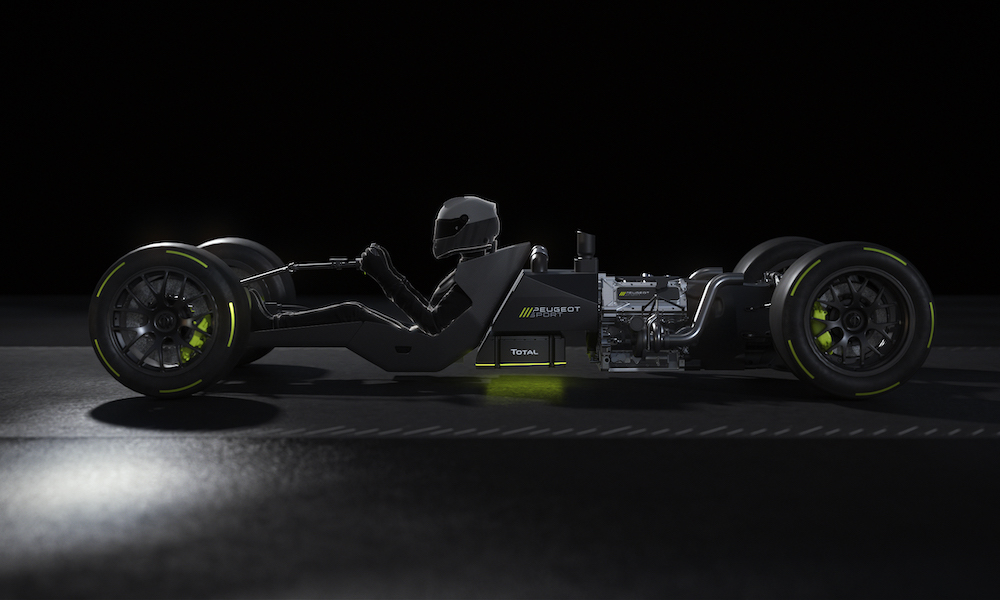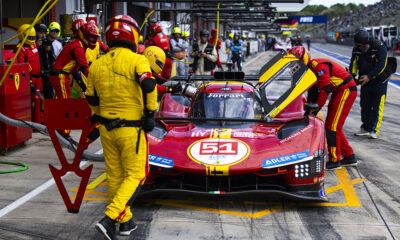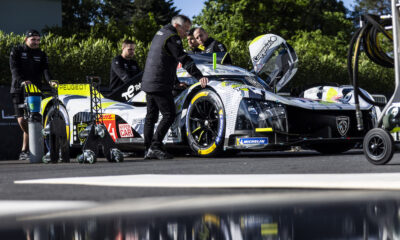
Image: Peugeot
Peugeot is in no rush to decide on drivers for its Le Mans Hypercar program, with PSA Motorsport director Jean-Marc Finot saying the manufacturer is “taking the necessary time” to develop a strong lineup for its return to endurance racing in 2022.
Finot told reporters during a group interview that driver selection is “not a hurry” for Peugeot, which is prioritizing the testing of its recently-revealed powertrain before moving to finalize other aspects of the project.
Peugeot hasn’t declared how many cars it will run in the FIA World Endurance Championship, but the factory-run project is likely to involve multiple entries.
“Currently we are in touch with some drivers,” said Finot.
“It’s not a hurry as the car won’t run by the end of 2021, so we will choose our drivers for their performance, spirit and how they fit in with the Peugeot Sport mind.
“We will build our team as one Peugeot team, with a very strong team spirit.”
Peugeot is continuing to look at potential drivers for its program while Sportscar365 understands that a handful of recent LMP2 standouts are believed to be in contention.
Experience in handling hybrid and electric racing machinery could also be useful, with Peugeot known to be leveraging the Formula E expertise of fellow PSA Group team DS Techeetah for the development of its LMH prototype.
“A lot of drivers are interested in this iconic Peugeot Sport program, and we are in touch with many of them,” said Finot.
“We have time as the car won’t run by the end of 2021 and we’ll take the necessary time to have the best team as possible for the team spirit of Peugeot Sport.”
While Peugeot LMH track testing is a long way off, the manufacturer confirmed that the first dyno evaluations of the bespoke 2.6-liter V6 twin-turbo race engine will begin soon.
“Our schedule is to have the ICE on the dyno in spring,” said Peugeot Sport technical director Olivier Jansonnie.
“After, we will test all of the powertrain with the front electric motor. And by the end of 2021, we will have the car on the track.
“By the beginning of next year, we will be ready to start tests on our simulator.”
The length of time that Peugeot has to develop its car and pick its drivers means the manufacturer is also in no rush to pinpoint exactly when its LMH car will debut in 2022.
Peugeot will only firm up a start date for its WEC program once the car’s reliability has been ascertained.
A name for the car is also undecided, although the powertrain has been christened ‘Hybrid4’ which is the same title that was given to Peugeot’s planned 908 LMP1 hybrid system that never materialized in 2012.
“We have announced that we will arrive in competition in 2022,” said Jansonnie.
“The exact starting date will really depend on how much confidence we can build, starting testing at the end of 2021, and how much confidence we can build on our level of reliability before we enter racing.”
Peugeot Experimenting with “Radical” Aero Designs
While the powertrain layout has been set, Peugeot is still working on several options for its LMH car’s aerodynamic configuration.
In September, when the company announced its commitment to LMH, Jansonnie stated that “part of the aerodynamic concept” had been decided while a preliminary shape could be viewed in a handful of early render images.
When asked how the aero development is progressing, Jansonnie explained that the project’s timeline and the freedom given by the LMH regulations are enabling Peugeot to experiment with some “radical” concepts.
“The aero development started at the beginning of the year,” he said.
“The aero regulations are not completely stabilized yet. There will be some changes happening, especially how the cars are homologated aero-wise.
“But we are doing quite a lot of CFD work, virtual aero development. We are starting the correlation phase with some wind tunnel [testing].
“The regulations on the aero side are very much open. I don’t think it’s been open like that for years now. We could actually come up with some quite radical concepts at this stage.
“In the end, the overall aero efficiency will be controlled by the Balance of Performance. It’s a great opportunity for us to develop something a little bit different from what has been done in the past, especially in LMP1, and still achieve the right level of performance.”
Peugeot’s WEC powertrain director Francois Coudrain added that he expects the main differentiator between LMH manufacturers in future WEC races to be how they approach the deployment of different hybrid technology solutions.
The Peugeot LMH will feature a 200 kW electric motor backed by a 900-volt battery that is charged by regenerative braking. This is the first LMH hybrid system to be detailed.
The overall powertrain is managed by an electronic vehicle control unit that is also responsible for limiting the 500 kW engine when the electric motor is in use, to ensure the car’s total power output doesn’t exceed the WEC Hypercar category’s 500 kW ceiling.
“[We have] no more details in terms of architecture; this is a very standard V engine,” said Coudrain.
“On the regulations, we have a lot of function to develop our powertrain, but with normal organic design-regulated constraints. Then we are open to do what we want in terms of component design, [not only] for the ICE but also for the transmission and ERS system.
“It would be very difficult to do many differences in terms of organic design.
“But we think that the energy management, and the software and calibration system, would be where we want to be different to our competitors.
“The reason why we decided to go to LMH was to capitalize on the experiences we have in hybrid cars and to capitalize as much as possible in terms of performance.”























